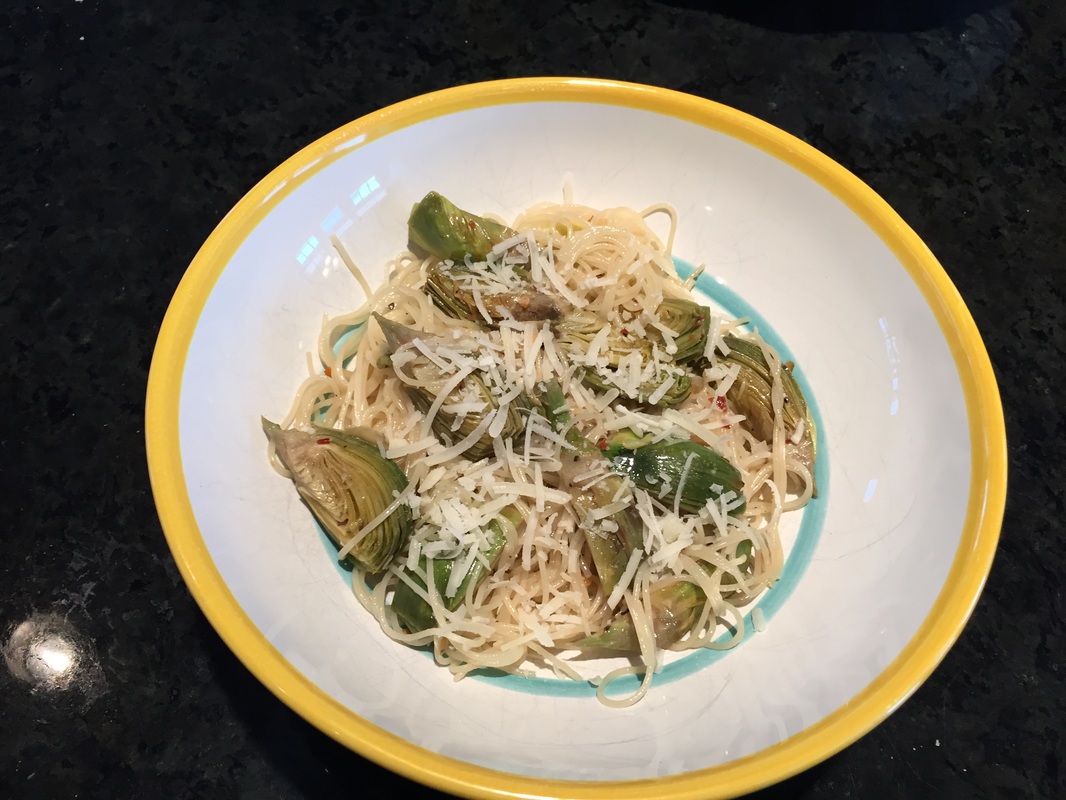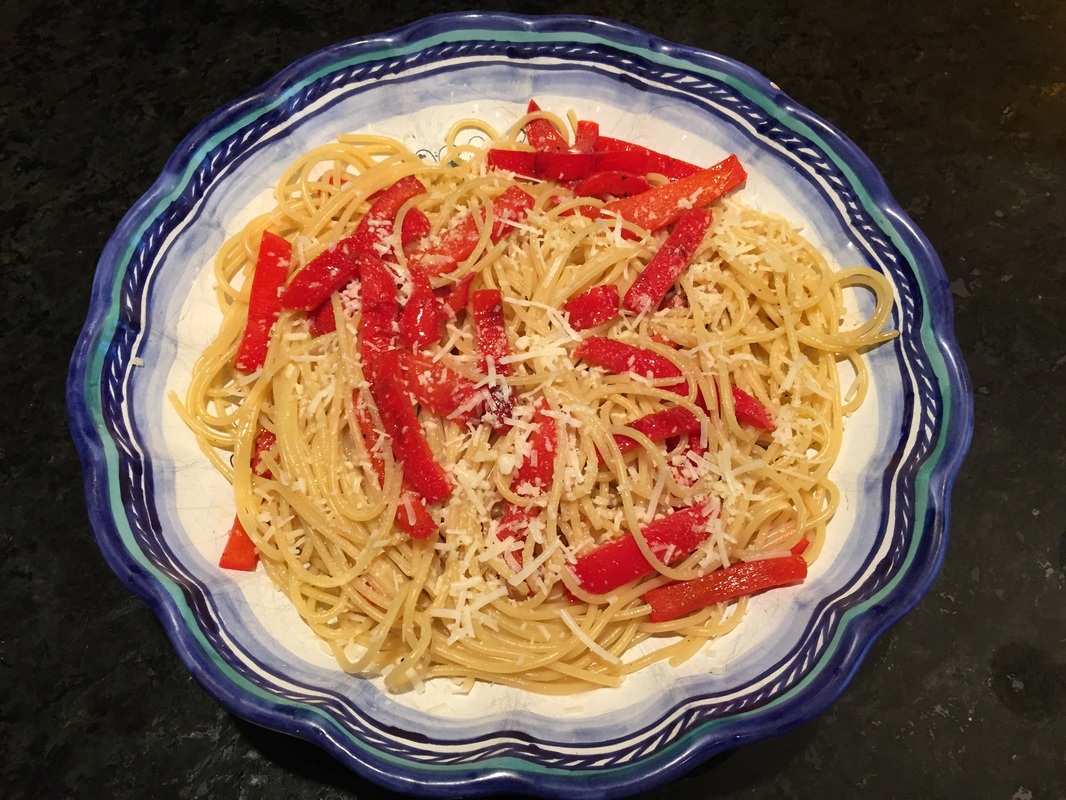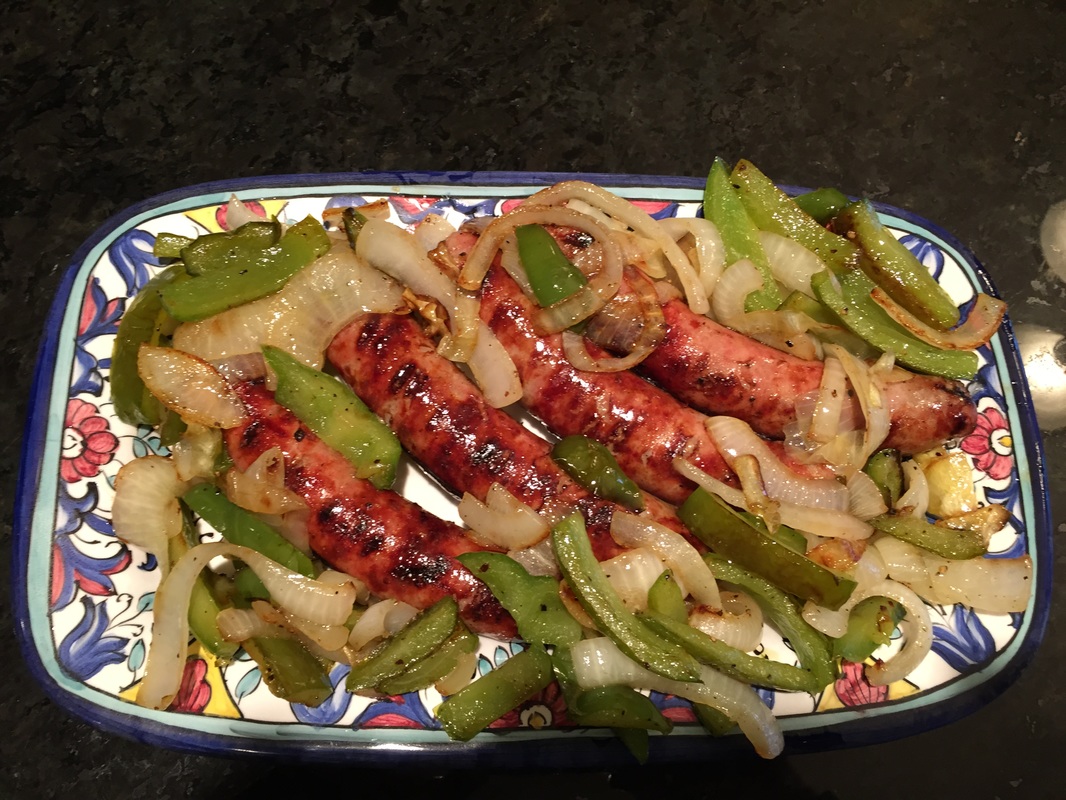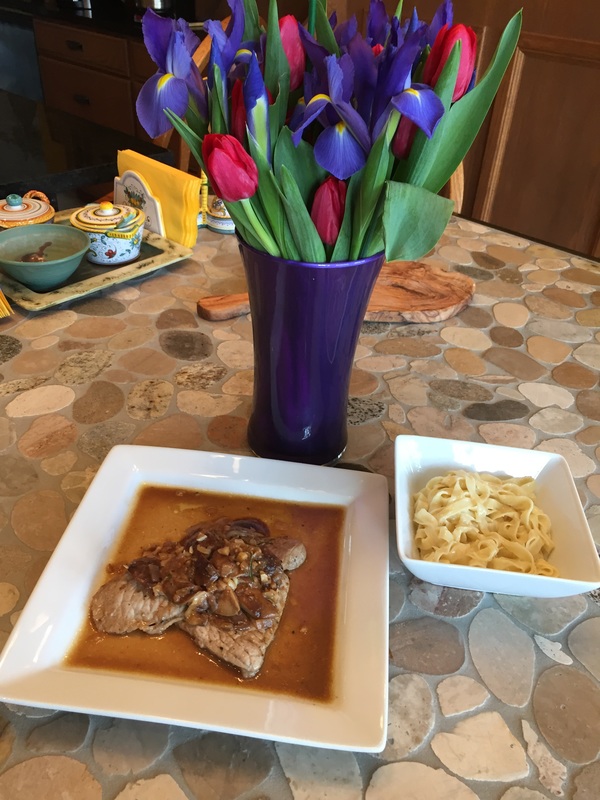| More and more often it seems I have less and less time available to prepare, enjoy, and then clean up after meals – especially evening meals. I know that at least some of you have this same problem because you have told me so. I also know that nothing I can write here will “solve” this dilemma for either of us. We all have our list of favorite “fast food” meals that we draw from when the available meal time is short. I thought it might be fun (and hopefully useful) to offer some suggestions for adding to your fast food lists, and since this blog is primarily about Italian fare I will focus on some meals my grandmothers and parents prepared many years ago when they were faced with similar time constraints. Full disclosure: I doubt they ever had similar time constraints. More often, they just preferred to cook something quick and simple. I suspect many of us can identify with that, too! Also, while these recipes are indeed rooted in my ancestry, they have been rewritten and updated (again hopefully) to reflect current trends and tastes. Pasta, of course, is an Italian food staple. Every Italian cook has a few pounds stashed away somewhere. Personally, if my supply drops below five pounds I begin to feel withdrawal symptoms!! My parents had at least a month’s supply on hand at all times. So it should be no surprise that my Italian fast food suggestions all involve pasta. The premise is simple: cook your favorite pasta in boiling salted water while you sauté one or more of your favorite fresh vegetables; mix the pasta and vegetables together with extra virgin olive oil and freshly grated cheese; and serve with a tossed salad and some crusty Italian bread. If you prefer a heartier meal, consider adding some grilled or sautéed sausages – Italian, German, Polish, or otherwise. I am including pictures here of three of my favorite Italian fast foods. The top two are essentially the same recipe – only the vegetable and cheese differ. Besides baby artichokes and red peppers, you could use green peppers, any type of onions, broccoli, cauliflower, zucchini, eggplant, carrots, or leeks. The list of cheese is long, too. In addition to Parmigiano-Reggiano and Caciocavalla, my favorites include pecorino Romano and Asiago, but any grated cheese will work. The pasta could have differed as well. I have always maintained that the pasta’s shape affects the mouth feel and overall dining experience. A plate of delicate capellini and a plate of robust mostaccioli or ziti provide two different dining experiences. I will let the picture of Sausages with Peppers and Onions speak for itself! It can be served with or without pasta. I frequently serve it with fried potatoes and, of course, the mandatory crusty Italian bread. | FEATURED RECIPES Cacio e Pepe Linguine with Baby Artichokes Pasta with Basil Pesto Pasta with Red Peppers Sausage with Peppers and Onions Linguine with Baby Artichokes and Parmigiano-Reggiano cheese. Pasta with Sauteed Red Peppers and Caciocavallo cheese. Italian Sausages with Onions and Green Peppers. |
As always, I hope you will try one of these suggestions – perhaps when you see some extraordinarily fresh vegetables at your local farmers' market or grocery store. I know you won't be disappointed.
Buon appetito.




 RSS Feed
RSS Feed